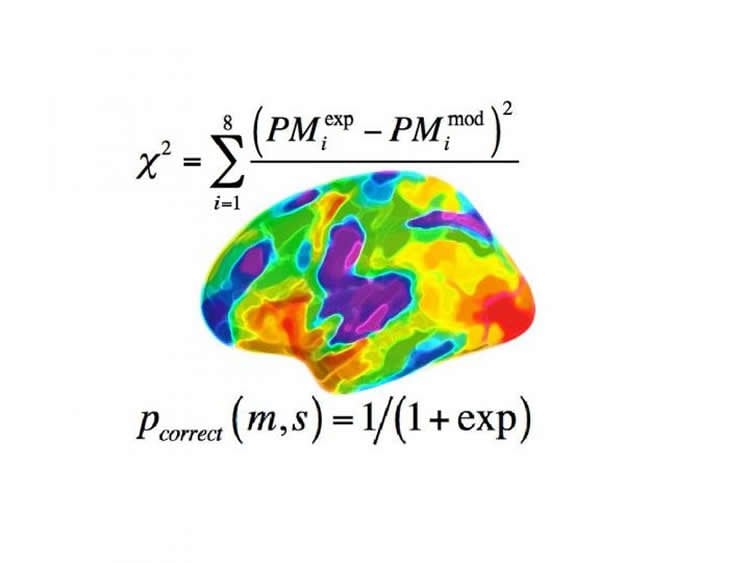Human memory is the result of different mental processes, such as learning, remembering and forgetting. However, these distinct processes cannot be observed directly. Researchers at the University of Basel now succeeded at describing them using computational models. The scientists were thus for the first time able to identify gene sets responsible for steering specific memory processes. Their results have been published in the current issue of the journal PNAS.
Thanks to our memory we are able to learn foreign languages, solve exams and remember beautiful moments from the past. To ensure optimal memory performance, several distinct cognitive processes have to cooperate. Information is first learned and then stored. Later, when we want to remember them, we depend on a properly functioning retrieval process.
If all these various memory processes are controlled by the same or by different genes and molecular mechanisms has so far been mostly unknown. One reason for this, is the fact that many of these processes are not amenable to direct measurement and have therefore remained inaccessible for science.

The mathematician Dr. Gediminas Luksys from the transfaculty research platform at the Psychiatric University Clinics Basel and the Faculty of Psychology at the University of Basel has now been able to successfully describe the various human memory processes for the first time. The study used data of over 1700 adults. Thanks to the computational model, the researchers were able to measure the processes and to conduct distinct genetic analyses for the specific mental processes.
Individual processes are based on different gene sets
The results show that distinct genetic profiles underlie specific memory processes: The study reports, for example, associations between a transporter protein set and the process of learning as well as between a cell adhesion set and the process of memory storage. The findings contribute to a better understanding of the complex processes of human memory and could lead to the development of new treatment therapies for various memory disorders in the future.
The current study is part of the Basel Genetics Memory Project led by Prof. Dominique de Quervain and Prof. Andreas Papassotiropoulos. The two co-heads of the transfaculty research platform are dedicated to getting these fundamental research results transfered to therapy projects as fast as possible.
Source: Olivia Poisson – University of Basel
Image Source: The image is credited to MCN University of Basel
Original Research: Full open access research “Computational dissection of human episodic memory reveals mental process-specific genetic profiles” by Gediminas Luksys, Matthias Fastenrath, David Coynel, Virginie Freytag, Leo Gschwind, Angela Heck, Frank Jessen, Wolfgang Maier, Annette Milnik, Steffi G. Riedel-Heller, Martin Scherer, Klara Spalek, Christian Vogler, Michael Wagner, Steffen Wolfsgruber, Andreas Papassotiropoulos, and Dominique J.-F. de Quervain in PNAS. Published online August 10 2015 doi:10.1073/pnas.1500860112
Abstract
Computational dissection of human episodic memory reveals mental process-specific genetic profiles
Episodic memory performance is the result of distinct mental processes, such as learning, memory maintenance, and emotional modulation of memory strength. Such processes can be effectively dissociated using computational models. Here we performed gene set enrichment analyses of model parameters estimated from the episodic memory performance of 1,765 healthy young adults. We report robust and replicated associations of the amine compound SLC (solute-carrier) transporters gene set with the learning rate, of the collagen formation and transmembrane receptor protein tyrosine kinase activity gene sets with the modulation of memory strength by negative emotional arousal, and of the L1 cell adhesion molecule (L1CAM) interactions gene set with the repetition-based memory improvement. Furthermore, in a large functional MRI sample of 795 subjects we found that the association between L1CAM interactions and memory maintenance revealed large clusters of differences in brain activity in frontal cortical areas. Our findings provide converging evidence that distinct genetic profiles underlie specific mental processes of human episodic memory. They also provide empirical support to previous theoretical and neurobiological studies linking specific neuromodulators to the learning rate and linking neural cell adhesion molecules to memory maintenance. Furthermore, our study suggests additional memory-related genetic pathways, which may contribute to a better understanding of the neurobiology of human memory.
“Computational dissection of human episodic memory reveals mental process-specific genetic profiles” by Gediminas Luksys, Matthias Fastenrath, David Coynel, Virginie Freytag, Leo Gschwind, Angela Heck, Frank Jessen, Wolfgang Maier, Annette Milnik, Steffi G. Riedel-Heller, Martin Scherer, Klara Spalek, Christian Vogler, Michael Wagner, Steffen Wolfsgruber, Andreas Papassotiropoulos, and Dominique J.-F. de Quervain in PNAS. Published online August 10 2015 doi:10.1073/pnas.1500860112






